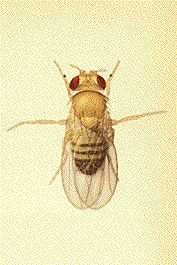Segregation distortion

A segregation distortion gene produces a distortion in normal segregation in favor of itself, so that chromosomes bearing this gene are over-represented in an organism's offspring. This phenomenon in general is also called meiotic drive.
The system could work as follows:
Two tightly linked loci mainly control the process:
• a recognition locus;
• a distortion locus.
The recognition locus has a particular recognition sequence, and the distorter allele produces a protein that binds to the recognition locus. If it is a 'distorter' recognition sequence, there is no effect. If it binds to any other recognition sequence, it prevents the chromosome from entering sperm. This produces a distortion in favor of chromosomes containing the segregation distortion gene. Female heterozygotes have normal Mendelian segregation.
A segregation distorter gene has a great selective advantage:
The segregation distorter gene was first found in fruitfly (Drosophila ) stocks from Wisconsin and Baja California. Perhaps more than 90% of offspring from male heterozygotes have the segregation distorter gene because the sperm containing other genes fail to develop. This is a great selective advantage. Any allele that gets into more than half of a heterozygote's offspring will automatically increase in frequency and should spread through the population.
Despite this selective advantage, only a few examples of gene complexes for segregation distortion have been found.
The image opposite is of Drosophila melanogaster, the species in which the segregation distortion gene was first identified.
| Next |



